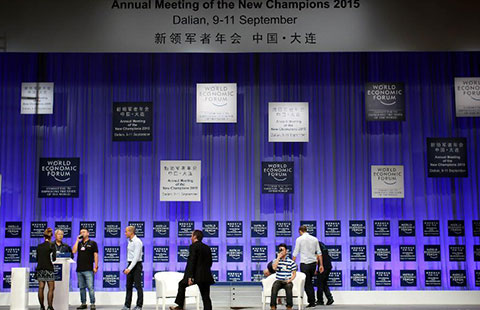Fast fashion labels ride e-commerce boom
By MATT HODGES (China Daily) Updated: 2015-07-06 09:35Although it does not disclose country-specific figures in Asia, media reports said its China revenue hit $300 million in 2013, a number the group was expecting to see triple by 2016-17.
In China, total online retail sales surged 53.6 percent in 2014 to 2.8 trillion yuan ($450 billion), according to a March 31 report by Knight Frank. This accounted for 10.6 percent of all retail sales in the country, up from 7.6 percent in 2013.
Both Gap and M&S now have online stores on Tmall.com and JD.com, the country's leading online marketplaces. M&S saw clothing sales on the former spike 200 percent in the last quarter of 2014. In January, it launched a new dedicated kidswear store on Tmall offering more than 300 lines.
"Continuing our 'bricks & clicks' strategy, we are leveraging e-commerce to strengthen brand awareness and reach across the country," said a spokeswoman for M&S China.
H&M, based in Sweden, launched an online store in China in September and Zara, based in Spain, followed suit on Tmall, the largest B2C website in China, in October.
Old Navy has also jumped on the Tmall bandwagon as it finds non-traditional marketing methods to be the new normal in this country of 1.4 billion, half of whom now live in cities. "Our commercial plan is integrated, whether it's social, digital, omni-channel," Barnes said. "All the pieces should tie together."
Gap reported that its first-quarter global net sales contracted 3 percent year-on-year to $3.66 billion-it did not explain why-but there is no doubt that Old Navy's global success led the conglomerate's fortunes in 2014
Gap posted net sales of $16.44 billion in 2014, up 2 percent from 2013. Gap's sales were down 5 percent during the period. Old Navy's rose by the same margin.
In fact, one of the largest apparel brands in the US-Old Navy is bigger than Levi's, Adidas and Gap-will remember 2014 as one of its most successful years to date in its home market, where it has over 1,000 stores.
Now it must see if it can gain enough traction in China to carry Gap if the same happens here-after first enjoying a nice little piggy-back ride into the market.
"Brand awareness of international fast fashion brands has rapidly improved in China in recent years," said Regina Yang, director and head of research and consultancy at Knight Frank Shanghai.
"They have been successful because their small inventories and quick turnover allow them to adapt to changing consumer demands."
Fast fashion sells because the brands offer lower prices, fashionable designs, immediately available trends, high product variety and a strong global image.
Even though media reports claim it takes H&M and Zara three months to get new product ideas into their stores-or 10 months in Gap's case-clothes can go from the catwalk to the shelf in as little as four weeks.
This clearly appeals to Chinese consumers, who are known to be more fashion-forward and bigger risk-takers than their American counterparts. Often, the younger generation leads the way.
"Though both Gap and Old Navy are considered lower-grade and inexpensive among American consumers, their product lines and price points are attractive to Chinese youth," said Chiang Jeongwen, a professor of marketing at China Europe International Business School, China's top-ranked business school.
Old Navy's China business appears to be flourishing despite it willfully trampling over some of the golden rules for success here-it refuses to localize its products, for example-and at least some credit is due to Gap.
- 2015 China International Fair for Investment and Trade kicks off in Xiamen
- China's commodity imports robust in Jan-Aug period
- China stocks rebound 2.92%
- 2015 China box office already past 2014 total
- China foreign trade decline widens in August
- Interview: JP Morgan's senior executive bullish on China
- Innovation, development the focus for NZ mayors
- Lives of freelancers

















